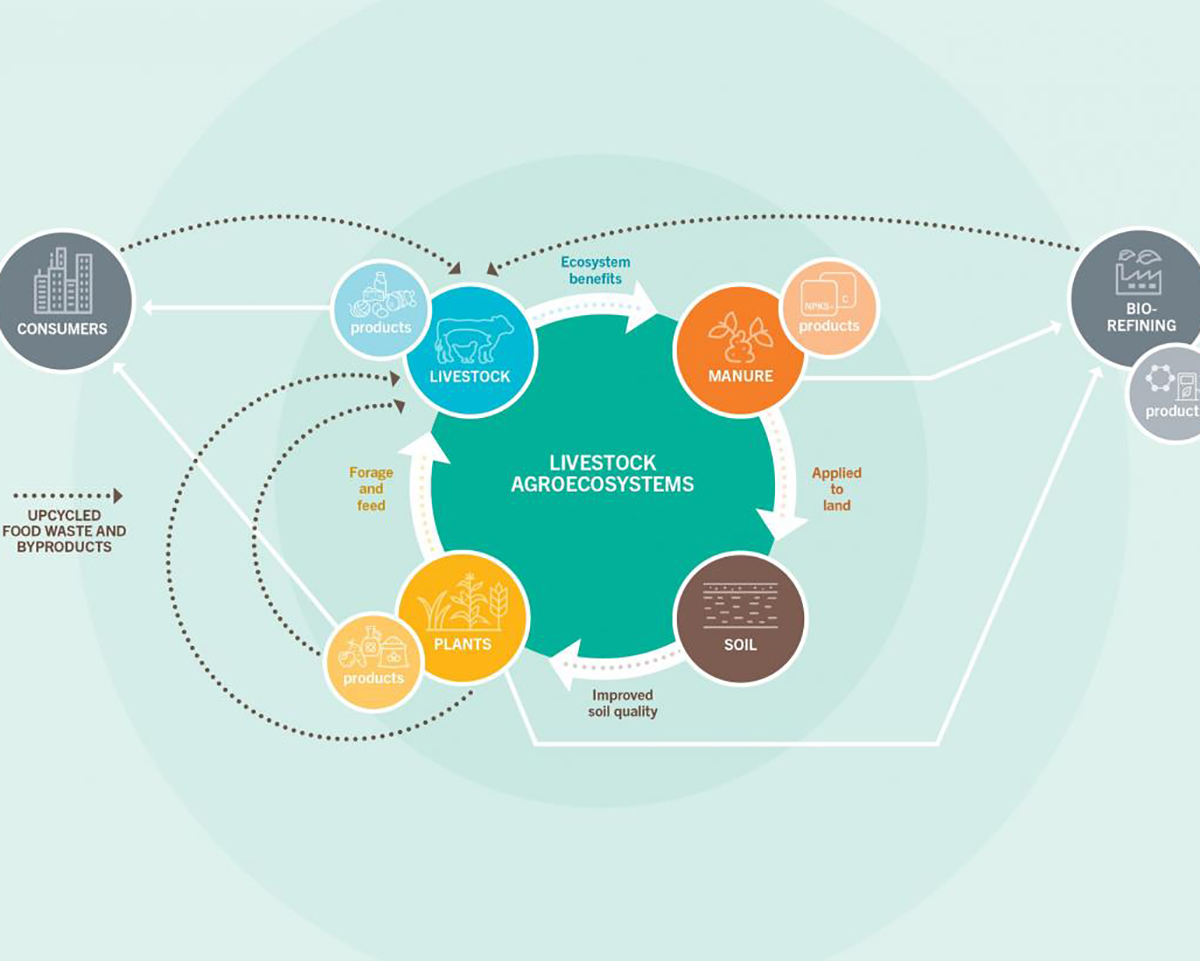
Cattle Country: Closing the loop: The role of food waste in a circular bioeconomy
The following article was written by Peter Frohlich, National Centre for Livestock and the Environment (NCLE), University of Manitoba. It was originally published in Cattle Country in December 2022.
Food waste in Canada is substantial – making up roughly 32% of all food dollars spent in retail and valued at approximately 49.5 billion dollars. At the global level, the Food and Agriculture Organization (FAO) at the United Nations suggest that one third (1.3 BMT) of potentially edible, nutrient rich waste is discarded annually. In efforts to improve global food security, and retain the lost nutrients, FAO has set a goal to halve the per capita global waste during food production, retail and consumption by 2030.
What is food waste?
Food waste falls into two categories. Food loss is associated with production, processing and distribution and includes by-products produced during grain and oil seed, fruit and vegetable processing. The second category includes food wasted at the retail and consumer level. This waste is mostly attributed to consumer behavior.
The role of livestock in a “circular bioeconomy”
The concept of a “circular bio-economy” focuses on the production of agricultural commodities with minimal external inputs, closing nutrient loops, and reducing negative impacts on the environment in the form of wastes and emissions, as seen in the figure. Cattle play a particularly important role as they can convert human-indigestible biomass, including grasses and forages, crop residues, grain screenings, by-products from commodity processing, as well as foodstuffs that fail to meet the quality standards for human consumption into high-quality protein in the form of meat and milk. As a consequence, cattle are often referred to as “up-cyclers”, upgrading inedible plants and plant by-products to high-quality protein and essential micronutrients, vitamins, and minerals. Numerous by-products are garnered from livestock including hides, tallow, blood, hooves, horns, organs, and bones. These by-products are utilized to produce marketable commodities including pharmaceuticals, cosmetics, leather, brushes, adhesives, charcoal, shampoo, glass, and pet food. Using the entire edible protein content from farmed animals, including currently underused meat co-products to meet the protein requirements of the global population could further improve environmental sustainability.
Challenges and solutions to re-using food waste:
Transportation
Researchers, industry and governments are continuing to work together to provide solutions to minimize food waste, however there are challenges. It can be costly to deliver by-products from food processing operations to the farm, particularly if they have a high moisture content. To offset high transportation fees, some Canadian processors and retailers provide products at reduced or no cost to farmers. Increased regional processing of commodities has also resulted in increased use of co-products as feed as livestock operations are located close to the source and further offset the transportation fees resulting in significant decreases to the overall costs of feed.
Canadian regulatory framework
Canadian regulatory framework can also act as a barrier to re using food waste in livestock feed. At present, all livestock feed materials must be included in the Feeds Act. According to CFIA, the Feeds Act supports the use of several by-product ingredients however smaller volume and emerging novel ingredients are still not a part of the Act and hence not allowed for use. To move forward, we need to use evidence from sound research to influence and re-examine regulatory frameworks to ensure that these regulations are accommodating the changing needs of agriculture production.
Addressing food safety and nutrient quality
Some processing by-products can contain chemical or physical contaminants, antinutritive factors, and high moisture that can promote bacterial growth. Research and industry have responded to address these challenges by exploring technology to eliminate food safety concerns including the physical separation of contaminants, heating, heat sterilization, ensiling and others. These technologies require investments in labour and equipment, but they are examples of how research and ingenuity can help to ensure we reuse by-products generated in food processing systems.
Finally, as an industry we need to invest in the characterization of nutrients contained in food processing by-products. Ensuring nutrient consistency and high ingredient quality will increase uptake and subsequently the use of these products in livestock feeds.
Industry is committed to minimizing food waste
Food waste is a global issue. It is a diverse challenge that requires a diverse solution. Several life cycle analyses have assessed the impacts of food waste destined for landfills versus the recycling and repurposing of this nutrient dense material. The message is clear, redistribution of food waste from landfills is essential to minimizing environmental impacts, ensuring resource sustainability and advancing global food security. Since cattle can successfully up-cycle low quality feedstuffs they are key in converting lower quality ingredients and wastes from novel food processing activities into high quality protein-based materials. As researchers work through the challenges and uncover opportunities, it is evident that integrating food waste in livestock production is a large part of the solution. Industry leaders are engaged and Canadian farmers have demonstrated interest, ingenuity and investment to replace traditional feeds with by-products and even food waste, setting new standards that ensure the development of sustainable food systems in Canada.






